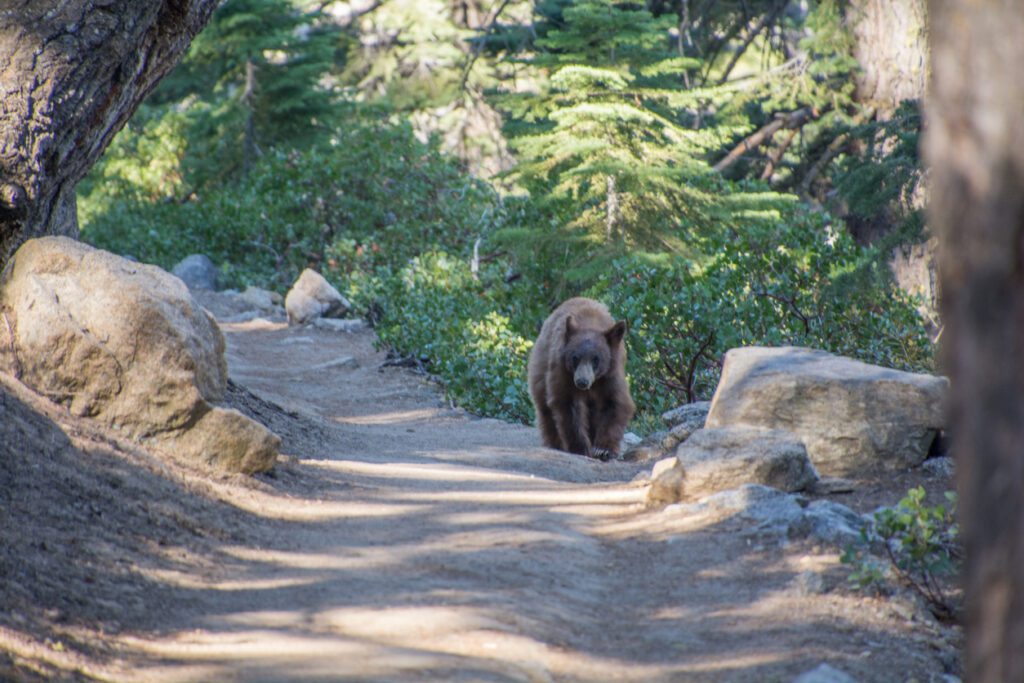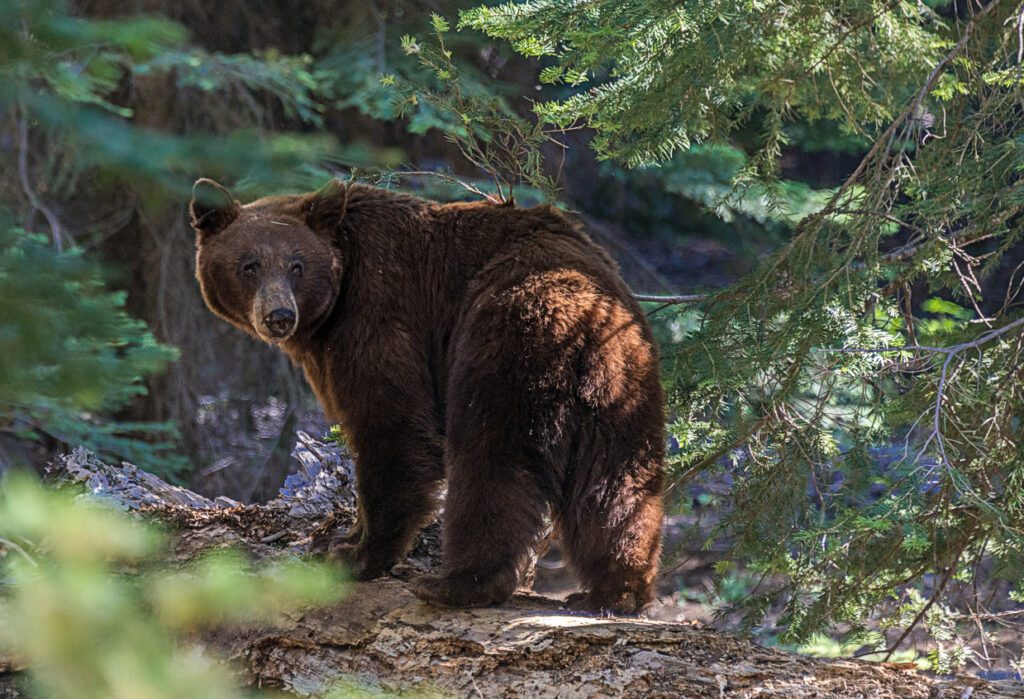Since we sold the property in Arnold, I’ve found that I miss seeing the wildlife, particularly the California Black Bears. So I’m writing about my bears. Through my study, I noted the individual characteristics of each bear I photographed and began confidently identifying each.
There’s something magical about bears. Seeing them in their natural habitat was an experience unlike any other, as I learned during my time in Arnold. When we sold the property, I thought I’d lost that connection forever. But then I realized I hadn’t just seen bears but also studied them. Each bear I photographed had unique characteristics, and I became confident in identifying them through careful observation. It was a thrilling process that I continue to be inspired by today. Studying bears is a reminder of the incredible individuality that exists in nature – and a testament to what we can learn if we pay attention.
The California Black Bear (Ursus americanus californiensis), a subspecies of the American Black Bear, is a prominent figure in the state’s wildlife and natural habitats. Despite their name, these creatures come in various colors, from jet black to a light cinnamon brown.
- Population: California is home to an estimated 30,000 to 40,000 black bears, covering approximately 52% of the state’s total land.
- Habitat: These bears primarily inhabit mixed woodland forests, favoring areas with dense underbrush for cover during the day.
- Diet: California Black Bears are omnivores ranging from berries, insects, nuts, plants, small mammals, and even fish.
- Size and Weight: Adult males typically weigh between 200 and 350 pounds, while females are slightly smaller, usually weighing between 120 and 180 pounds.
- Life Span: In the wild, they can live up to 20 years, though their life expectancy is often reduced due to human interactions.
- Reproduction: Female bears, also known as sows, give birth every other year to a litter of one to three cubs during hibernation in the winter.
- Hibernation: Interestingly, unlike many bear species, California Black Bears do not fully hibernate but enter a state of deep sleep or inactivity, which allows them to wake up quickly if disturbed.
Despite their large population, the California Black Bears face threats from habitat loss and human interference. However, with efforts directed toward conservation and cultivating an understanding of these magnificent creatures, we can ensure their continued presence in California’s rich biodiversity. So, if you’re ever fortunate enough to encounter one of these bears in the wild, remember to observe from a safe distance and respect their natural habitat. Together, we can preserve the beauty and diversity of our state’s wildlife for generations to come. Although California Black Bears are not typically aggressive toward humans, it is essential to remember that they are still wild animals and should be treated with caution and respect.
Besides being essential to the state’s ecosystem, California Black Bears have also played a significant role in Native American culture. Many indigenous tribes revered these bears, and they often symbolized strength, courage, and healing. Today, they continue to hold significance in modern-day tribal ceremonies and traditions.

Moreover, California Black Bears also play a crucial role in seed dispersal and promoting plant growth. As they forage for food, the bears consume various plants and berries, spreading through their scat. This process helps to maintain healthy plant populations and supports the balance of the ecosystem.
The California Black Bear is vital to California’s wildlife and culture. Their adaptability, intelligence, and environmental contributions make them a remarkable species. By preserving and protecting their habitats, we can ensure that these majestic creatures continue to thrive in our state for years. So, let us all do our part in preserving this iconic symbol of California’s natural beauty.
Keep exploring, learning, and appreciating the incredible diversity of wildlife around us!
Thank you for reading this blog post, and if you have any questions or comments, please leave them in the Comments section below.
Copyright © 2019. I Don’t Know All The Answers, Nikki Mastro.
All of my photographs and documents are Copyrighted.
Both images included in this blog are from the iStock.com library.
No part of this website, including text, photographs, and documents, may be reproduced, stored in a retrieval system, or transmitted in any form or by any means without written permission from the copyright holder. All unauthorized use is strictly prohibited. If you choose to copy or share any information from my site, you must provide a link to the source. I appreciate your cooperation.
For further information concerning “I Don’t Know All The Answers.”
– Blog: https://www.idontknowalltheanswers.com
– Facebook: https://www.facebook.com/Nikki.L.Mastro
– Instagram: https://www.instagram.com/i_dont_know_all_the_answers/
– Linkedin: https://www.linkedin.com/in/nikki-mastro-05455a3a/
– Youtube Channel: https://www.youtube.com/@idontknowalltheanswers1954

